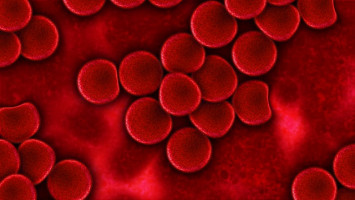
Final data from the pivotal Phase 2 PACE clinical trial of ponatinib in refractory chronic myeloid leukaemia (CML) or Philadelphia chromosome-positive acute lymphoblastic leukaemia (Ph ALL) were published in Blood.
The manuscript is available online today and will be included in a future print edition of Blood.
The final five-year results support as an effective treatment option for patients with chronic-phase CML (CP-CML) whose prior therapies have failed.
Ponatinib received EU market authorisation in 2013 for some CML and ALL patients, and was previously approved by the US FDA for CML/ALL patients before having its approval rescinded based on clotting events and blood vessel narrowing.
Ponatinib, a tyrosine kinase inhibitor (TKI) with potent activity against native and mutant forms of BCR-ABL1 (an abnormal tyrosine kinase that is expressed in CML and Ph ALL), received full approval from the U.S. Food and Drug Administration in 2016.
Ponatinib is indicated for the treatment of adult patients with CML or Ph ALL for whom no other TKI is indicated, including those with T315I-positive CML or T315I-positive Ph ALL.
Ponatinib is not indicated and is not recommended for the treatment of patients with newly diagnosed CP-CML.
The pivotal Phase 2 PACE trial, which supported the FDA Accelerated Approval Program, evaluated the efficacy and safety of ICLUSIG at a starting dose of 45 mg once daily in 449 patients with CML (270 CP-CML, 85 accelerated-phase CML (AP-CML), 62 blast-phase CML (BP-CML) or Ph ALL (n=32) resistant/intolerant to prior TKI therapy, or with the T315I mutation, of which 444 were evaluable for efficacy analyses.
The final results reflect a data analysis as of February 6, 2017, with median follow-up of 37.3 months for all patients and 56.8 months for CP-CML patients.
“The PACE trial is among the longest and largest studies of patients with CP-CML who have received two or three prior TKIs, and the findings provide treating physicians with important updated information about the clinical benefits and safety profile of ICLUSIG,” said Jorge Eduardo Cortes, M.D., Deputy Chair and Professor of Medicine, Department of Leukemia, MD Anderson Cancer Center. “These final PACE results demonstrate that ICLUSIG provides lasting clinically meaningful responses, irrespective of dose reductions, in this population.”
Among 267 heavily pre-treated CP-CML patients (>90% had received at least 2 prior approved TKIs), 159 (60 percent) achieved MCyR at any time, of whom 144 (54 percent of evaluable CP-CML patients) achieved complete cytogenic response (CCyR).
Further depth of response was attained where 108 (40 percent) patients achieved major molecular response (MMR) and 64 (24 percent) achieved molecular response 4.5 (MR4.5).
Among CP-CML patients, 82 percent and 59 percent of those who achieved major cytogenic response (MCyR) by 12 months and MMR at any time, respectively, were estimated to maintain these responses at five years, based on Kaplan-Meier methods.
Responses achieved by CP-CML patients in PACE correlated with long-term outcomes, with estimated progression-free survival (PFS)/overall survival (OS) rates at five years of 53 percent/73 percent overall, and with comparable rates in the resistant/intolerant and T315I cohorts.
Dose reductions were implemented in October 2013 to decrease the risk of vascular occlusive events (VOEs), including arterial occlusive events (AOEs).
A previous post hoc analysis of PACE data suggested that AOEs may be dose-related, with each 15-mg reduction in average daily dose intensity predicted to lead to an approximately 33 percent reduction in the risk of AOEs.
Among PACE CP-CML patients who were in MCyR or MMR as of October 2013 and had their dose reduced (including those who had their dose reduced to 15 mg per day), ≥90 percent maintained response 40 months after pre-emptive dose reductions.
The most common any-grade treatment-emergent adverse events (TEAEs) observed in CP-CML patients (with frequency ≥40 percent) were rash (47 percent), abdominal pain (46 percent), thrombocytopenia (46 percent), headache (43 percent), dry skin (42 percent) and constipation (41 percent).
The most common grade 3/4 TEAEs in CP-CML patients (with frequency ≥10% [n≥27]) were thrombocytopenia (35 percent), neutropenia (17 percent), hypertension (14 percent), increased lipase (13 percent), abdominal pain (10 percent) and anaemia (10 percent).
The cumulative incidences of treatment-emergent AOEs, including cardiovascular, cerebrovascular and peripheral vascular events, continued to increase over time; 31 percent of CP-CML patients and 25 percent of the overall population reported at least one AOE.
The exposure-adjusted incidence of newly occurring AOEs remained relatively constant throughout the study period in both CP-CML patients and all patients.
Categorization of AOEs included a broad collection of MedDRA preferred terms; no individual preferred term occurred in >10 percent of patients.
For advanced phase CML patients included in PACE, major hematologic response (MaHR) was achieved by 51 (61 percent) patients with AP-CML and 19 (31 percent) patients with BP-CML. Among patients with Ph ALL, MaHR was achieved by 13 (41 percent) patients.
Source: BusinessWire
We are an independent charity and are not backed by a large company or society. We raise every penny ourselves to improve the standards of cancer care through education. You can help us continue our work to address inequalities in cancer care by making a donation.
Any donation, however small, contributes directly towards the costs of creating and sharing free oncology education.
Together we can get better outcomes for patients by tackling global inequalities in access to the results of cancer research.
Thank you for your support.